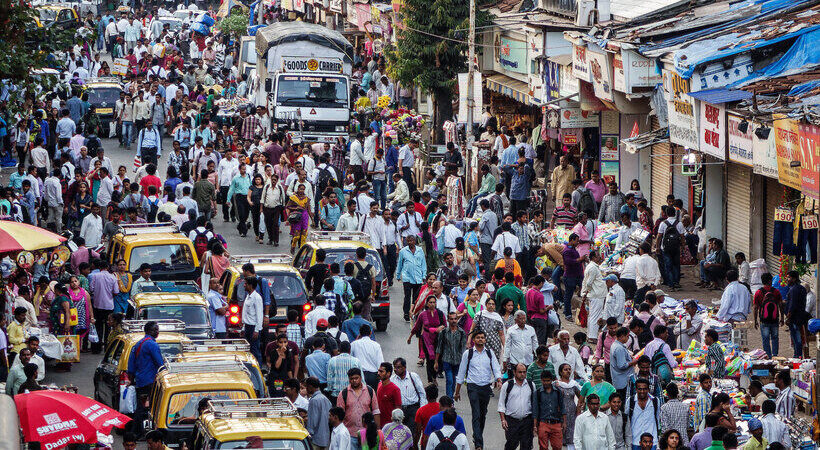Overpopulation is a major concern of the present era and it is hardly news-worthy information. When conversations on this matter happen, all tongues lead to India. Indians constitute 1/6 of the world population, ranking second as the most populated country with a 1.37 billion population, which is poised to surpass China as early as 2024. But is overpopulation as detrimental to India as people suggest?
When China first introduced the one-child policy to curb population explosion, opinions were split. Most experts questioned its harmful consequences while others supported it solely because of its short-term benefits. Although in hindsight, the experts were accurate as China suffers from uneven age stratification with a higher aging population and lower youth population, decelerating economic growth, and more men than women prompting trafficking.
The present case in India is the opposite. Around 65% of the country’s population are people aged below 35. This can stimulate economic growth, but also spawn another population explosion, depending on government actions and the life choices of the populace.
Some have suggested the introduction of policies limiting the number of children one family can have. But India’s population growth is uneven in different parts of the country. The state of Uttar Pradesh, India’s most populous state, recently revealed a prospective bill that would deny government jobs, promotions, subsidies, and the right to contest elections to anyone with more than two children; in short, a two-child policy.
If implemented, it would not only be violating and invasive but can also have devastating effects in the future, as seen in China. The sex ratio in UP is already disproportionate at 912 females per 1000 males. In a country with a deep-rooted preference for boys over girls, the situation would further exacerbate.
Many argue overpopulation in India can result in increased pollution and inequality. If you have visited India, this inference is very precise.
India is, indeed, polluted. 21 out of the 30 most polluted cities in the world is in India and is ranked third in terms of worst air quality. Our country contributes to 7% of the world’s CO2 emissions. Our waterbodies are not any better. 80% of the country’s water is severely polluted, filled with raw sewage, waste, and silt. This has resulted in 1.5 million deaths from Diarrhoea every year. Forests are not safe either. Over 1.5 million hectares of forest land have been decimated for development since 1980, and only 21.5% of India’s land is currently covered in forest.
Although the situation is grim, India’s CO2 emissions per capita are low in comparison with developed countries. Consumption of resources is incredibly high in More Economically Developed Countries (MEDCs), resulting in higher individual carbon footprints. With a population of over 1.5 billion, it is unsurprising for countries like China and India to lead statistics on pollution. Nevertheless, the Indian government must initiate measures to cut down the current level of pollution to a large extent.
One of the fears of overpopulation is the rapid depletion of resources. As environmentalist experts have postulated, the current reckless overuse of limited natural resources can affect future generations. Anyhow, the current population has enough resources to survive. The problem lies in its distribution. Around 50 million Indians survive on less than $2 a day, living under extreme conditions of poverty, whereas the top 10% of the Indian population own 77% of the national wealth.
Unequal distribution of resources depicts overpopulation as a menace to human society when in reality, inequality is the true culprit. The COVID-19 crisis aggravated and unveiled this inequality. Shortages in hospital beds were not because of overpopulation, but because most could not afford the beds at private hospitals. The increase in funeral costs also forced people to perform last rites themselves.
A considerable number of Indians live in unhygienic areas that expose them to diseases, and food security affects a significant population of India as the country ranks 102 in Global Hunger Index. Research has discovered every $1 spent on nutritional interventions by the Indian government can generate $34-38 in economic returns. In a country where 194.4 million are undernourished, this could be beneficial.
Overpopulation fears have desensitized preventable deaths occurring in India, which generally affects people living in poverty. Human lives are watered down as numbers. They are blamed for taking up too many resources, although most are consumed by a minuscule population that can afford such resources.
Population explosion is usually an outcome of developing countries where robust health infrastructure reduces mortality rates, but women’s development is yet to occur. There are several ways to ‘naturally’ mitigate such an issue. Bring more and more Women into India’s workforce, education, government incentives, family planning and individual autonomy are few plausible solutions. The world is also witnessing a drop in fertility rates. Nevertheless, the government needs to focus on palliating its destructive ramifications such as pollution and inequality.



















